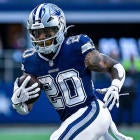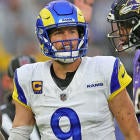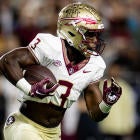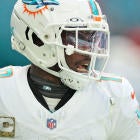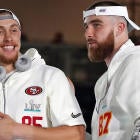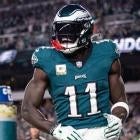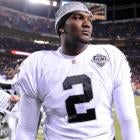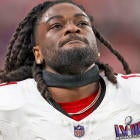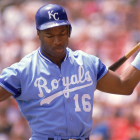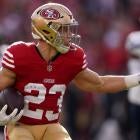
For several years now, the Dallas Cowboys have been under-utilizing explosive running back Tony Pollard.
In three-and-a-half(-ish) seasons, Pollard has 398 carries for 2,115 yards (5.3 per carry) and 13 touchdowns, as well as 94 receptions for 758 yards (8.1 per reception) and two additional scores. During that same span, Pollard has lagged far behind Ezekiel Elliott in snaps, rushing attempts, targets, and receptions, despite being the obviously more effective and (especially) explosive player. Zeke has 891 carries for 3,781 yards (4.2 per carry) and 32 scores, as well as 159 receptions for 1,077 yards (6.8 per reception) and six touchdowns since Pollard was drafted. In other words, Pollard has averaged 1.2 more yards per touch than Elliott but been given less than half as many touches.
In Week 9, the Cowboys finally had an opportunity to see what Pollard looked like when given a feature back role as Elliott sat out with a knee injury; but curiously, he played only 53% of the snaps against the Chicago Bears. (He still took his 15 touches for 147 total yards and three touchdowns.) When asked about it, Cowboys running backs coach Skip Peete told reporters that he feels Pollard has around a 30-snap-per-game maximum because he becomes not quite as effective after that.
Pollard seemingly disagrees. "I definitely can do more" than 30 snaps, Pollard said, per the Dallas Morning News. "I'm pretty sure he didn't mean exactly a 30-play cutoff."

Pick Six Newsletter
Crafted By The Best NFL Experts
Get the day's big stories + fun stuff you love like mock drafts, picks and power rankings.
Thanks for signing up!
Keep an eye on your inbox.
Sorry!
There was an error processing your subscription.
For Peete's (and the Cowboys') sake, I sure hope he didn't. Not only because Pollard had played 41 snaps the week before Peete made the 30-snap comment, but also because Pollard has actually been more electric when touching the ball after his 30th offensive snap of the game than before it.
As ESPN's Bill Barnwell noted, Pollard has now touched the ball just eight times in his career after his 30th snap of a given game. On those eight touches, Pollard has totaled 113 yards (14.1 per touch) and two touchdowns. Even if you take out the ridiculous 54-yard touchdown run on his final (31st) snap of the game against the Bears, he'd still averaged more than 8 yards per touch in those situations.
Peete told reporters that when he got to the sideline following that run, Pollard told him that he was tired and done for the day. Unsurprisingly, there's more to that story.
"That was more of a joking," Pollard said. "Not really, 'I don't got anything left.' More, pretty much ready to let the young guys go in there and get some work. That was pretty much what that was."
Pollard's score had just put Dallas (which has arguably the NFL's best defense) up by three touchdowns with 10 minutes left in the fourth quarter, so Pollard was telling his position coach to give the remainder of the looks to undrafted rookie Malik Davis and practice-squad veteran Qadree Ollison. Which, I mean, that's what the Cowboys should have been doing anyway. There was no reason to risk injury to one of their most explosive playmakers at that point in the game.
As for the rest of the season? "Whatever they ask me to do, whatever they need me to do, I got it," Pollard said.
And the Cowboys should let him do a whole lot more than they have so far. Nobody, anywhere, is advocating that the Cowboys cut Elliott out of the offense entirely. He's shown himself to be particularly effective in short-yardage and red zone situations in recent seasons, for example, and could perhaps be even more effective there if not asked to carry so much of the load throughout the rest of the game. Meanwhile, the Cowboys could give Pollard more of the work and benefit from the increased chances of an explosive play. If only Jerry Jones were willing to admit that the team would be better off for it, that is.









